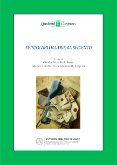Fonti e tradizioni culturali nella corrispondenza di Francesco Filelfo: nuove indagini e percorsi metodologici - II. Schedografia medica

Pubblicato 22.12.2018
Parole chiave
- Francesco Filelfo,
- Catone Sacco,
- Erasmo da Rotterdam,
- Plutarco,
- Aristotele
- Epistolografia,
- Storia dell’Università di Pavia,
- Storia della medicina ...Più
Abstract
This paper investigates the role that medical sources play in Francesco Filelfo’s epistolary collection by focusing on Letter V 1 to Catone Sacco, the text of which is reproduced in the Appendix. The historical and cultural analysis enhances our understanding of the environment and circumstances in which the letter was composed (specifically, the University of Pavia of the mid fifteenth century). The identification, based on close textual analysis, of specific citations from Plutarch’ Quaestiones convivales and Aristotle’s Problemata allows us to appreciate for the first time how the recovery of the classical tradition of composing answers (per quaesita) marked a turning point in the tradition of Renaissance epistolography, which was to enjoy such success in the sixteenth century and to which Filelfo was a decisive early contributor. The essay also dwells on Filelfo’s particular physiological explanation of the song of the dying swan, a theme later taken up by Erasmus of Rotterdam in his Adagia.
